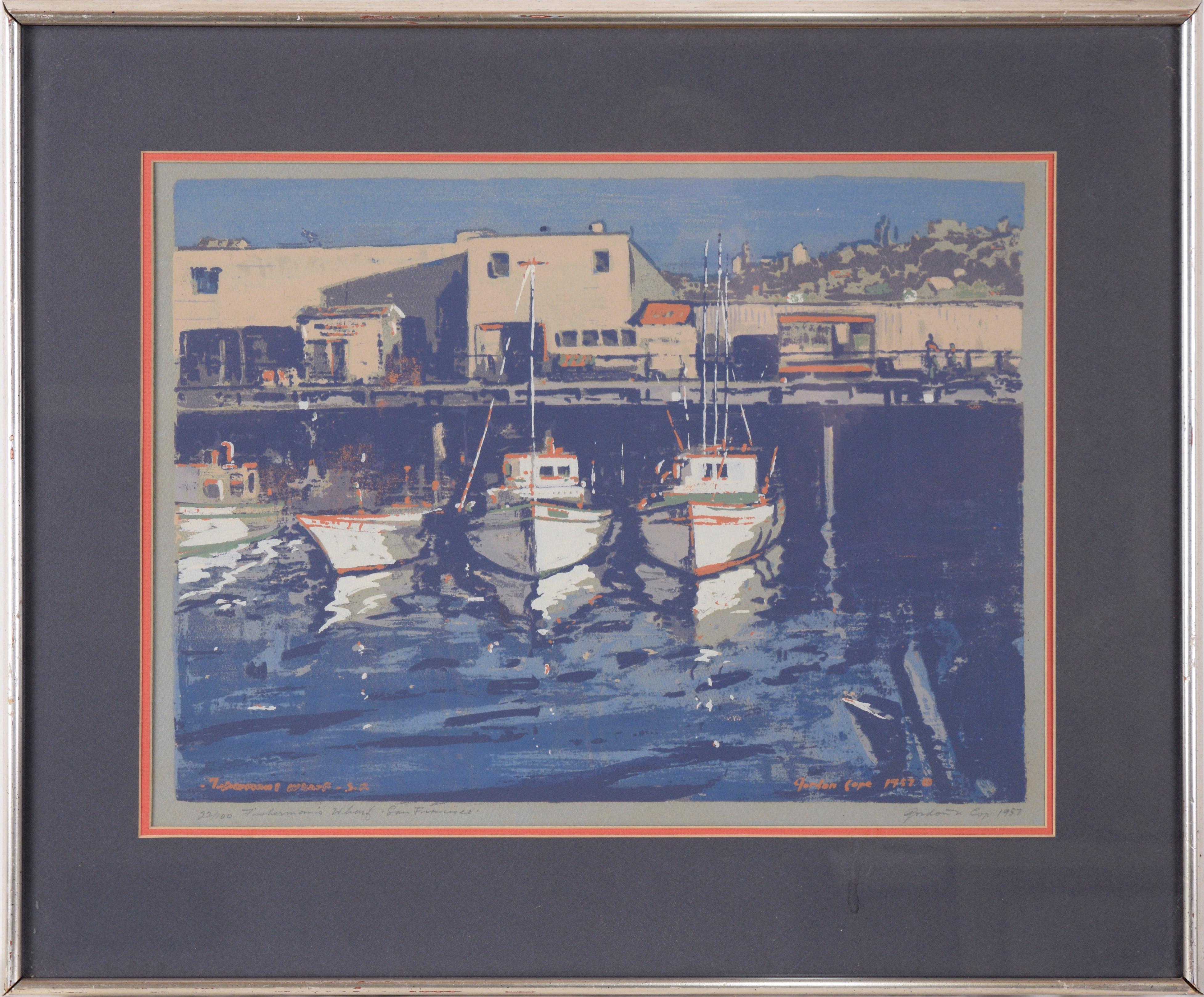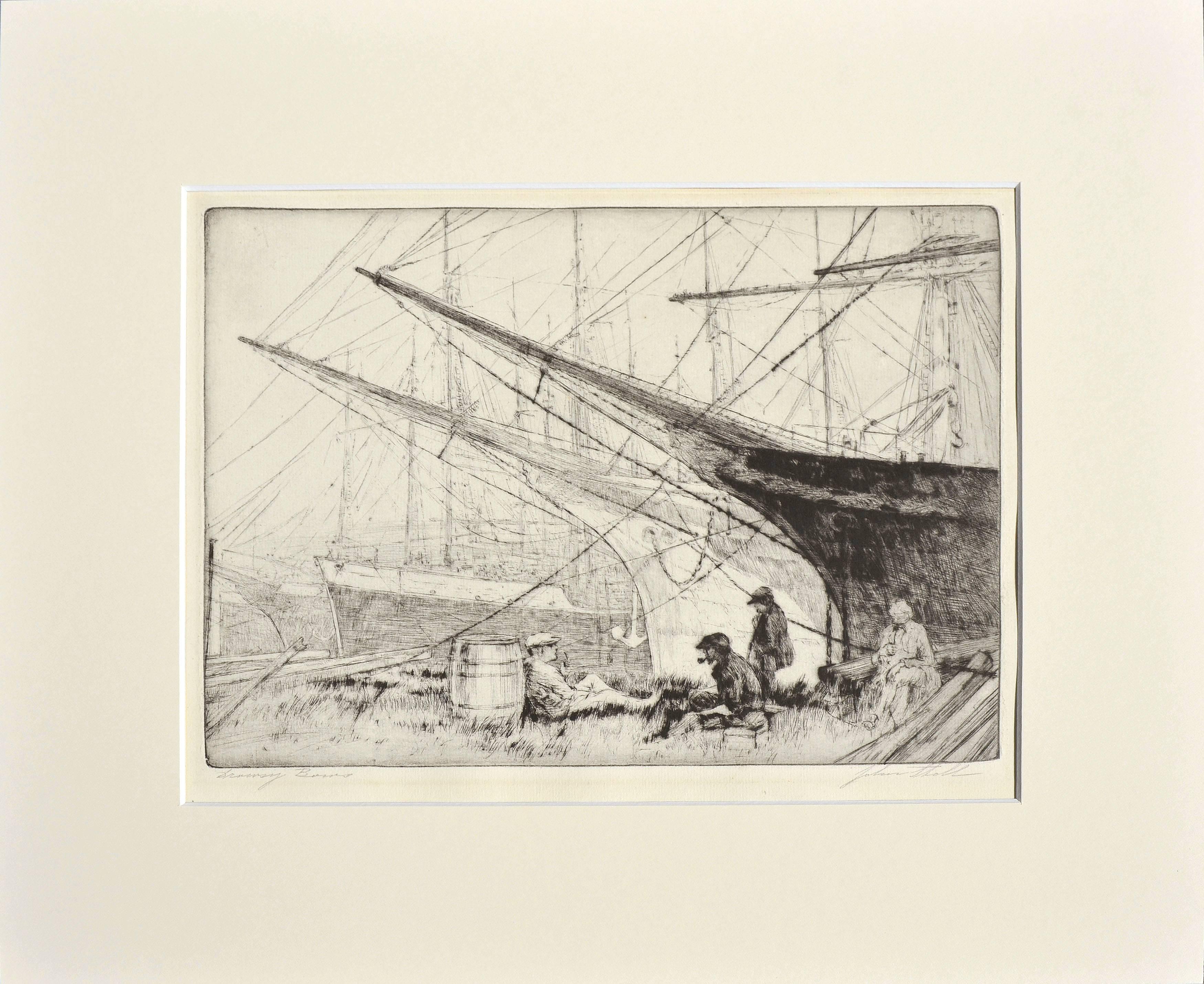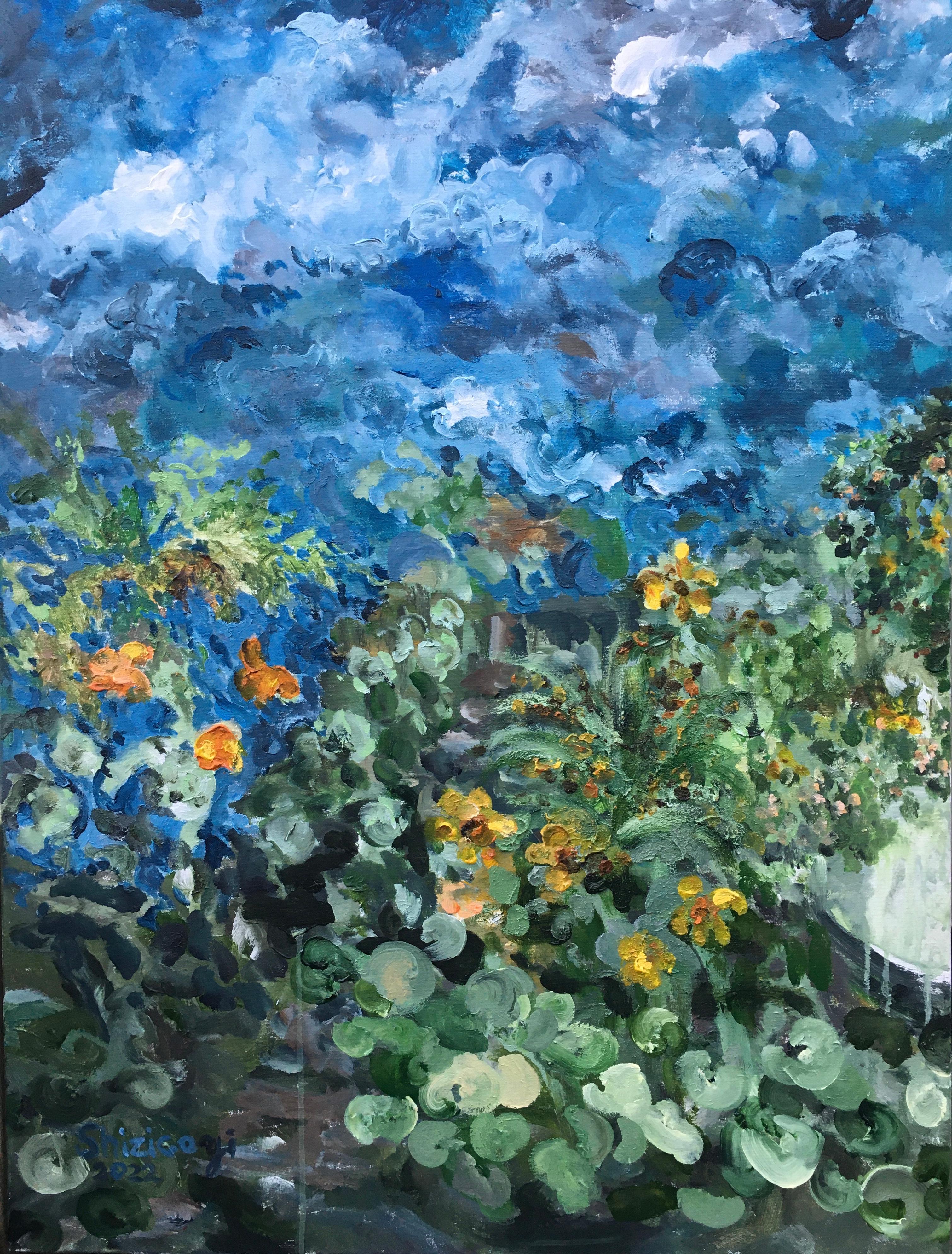Items Similar to Late 19th Century Normandy French Market Engraving
Want more images or videos?
Request additional images or videos from the seller
1 of 9
Charles John WatsonLate 19th Century Normandy French Market EngravingCirca 1880
Circa 1880
About the Item
Charming engraving of the market in Aumale, France in Normandy by Charles John Watson (British, 1846-1927), circa 1880. Signed within engraving and below by artist. Presented under glass in pewter-toned wood frame. Image size: 8.5"H x 9.25"W.
The painter and printmaker, Charles John Watson, grounded his work in close observation of the world around him, in the tradition of the best artists of the Norwich School. His resulting achievements include incisive etchings and highly atmospheric watercolours of buildings, landscapes and coastal scenes at home and abroad.
Charles John Watson was born at 3 Upper Surrey Street, Norwich, Norfolk, on 31 August 1846, the second of four children of Daniel Filby Watson, a journeyman printseller, and his wife, Mary Ann (née Matthews). By 1861, the family had moved a short distance to All Saints Green, and Charles’s father, Daniel, was working as a carver and gilder. However, Daniel died in 1865, and his widow took up his former business as a printseller.
Charles John Watson himself initially worked an artists’ colourman, but obviously had ambitions to become an artist and, by his mid twenties, was beginning to exhibit paintings and etchings at leading London galleries. These included the Royal Academy, the Society of British Artists, the Institute of Painters in Water Colours and, most significantly, the Society of Painter-Etchers and Engravers.
Watson was one of the earliest fellows of the Society of Painter-Etchers and Engravers, joining after the ‘Allcomers’ exhibition in spring 1881, and exhibiting a considerable number of etchings between then and 1920, with increasing artistic success. (The society gained its Royal Charter in 1888.) While establishing himself with scenes of Norfolk, he soon widened his repertoire.
In 1885, Watson helped found the Norwich Art Circle, with Edward Elliott and Robert Bagge-Scott, and became its first president. Other early members included Minna Bolingbroke, his junior by 10 years, who would later become his wife. Despite his strong affiliations to Norfolk, and to Norwich in particular, including his knowledge of the history of local artists, he moved to London in 1888. Settling in Chelsea, he took a studio at 5 Wentworth Studios, Manresa Road, and produced work for a series of shows at Robert Dunthorne’s Gallery in Vigo Street, often inspired by his travels in France, Holland and Italy (including Venice and Sicily). He also became a member of the Hogarth Club, in Dover Street. By 1893, he had sufficiently raised his profile that he won a medal at Chicago’s International Exhibition.
Marrying in Norwich in 1894, Charles and Minna settled at 19 Girdlers Road, Brook Green, Hammersmith, London, where they were joined by Minna’s elder sister, Constance. The Watsons worked closely together until the death of Charles on 2 November 1927. Four years later, in 1931, Minna published a Catalogue of the Etched and Engraved Work of Charles John Watson.
- Creator:Charles John Watson (1846 - 1927, English)
- Creation Year:Circa 1880
- Dimensions:Height: 21 in (53.34 cm)Width: 21 in (53.34 cm)Depth: 0.75 in (1.91 cm)
- Medium:
- Movement & Style:
- Period:
- Condition:
- Gallery Location:Soquel, CA
- Reference Number:
About the Seller
4.9
Platinum Seller
These expertly vetted sellers are 1stDibs' most experienced sellers and are rated highest by our customers.
Established in 1986
1stDibs seller since 2014
2,526 sales on 1stDibs
Typical response time: <1 hour
- ShippingRetrieving quote...Ships From: Soquel, CA
- Return PolicyA return for this item may be initiated within 14 days of delivery.
More From This SellerView All
- "Sharing" Multi Layer Screen Print on PaperLocated in Soquel, CAVibrant screen print of people gathering around a pond by Jane Leddy (American, 1925-2019). People and various animals - including goats, ducks, and cows - ...Category
1980s American Impressionist Figurative Prints
MaterialsPaper, Ink, Screen
- "Fisherman's Wharf - San Francisco" Multi Layer Screen Print on Paper - SignedBy Gordon CopeLocated in Soquel, CA"Fisherman's Wharf - San Francisco" Multi Layer Screen Print on Paper - Signed Rare and bold Screen Print (Silk Screen) of Fisherman's Wharf 1957 by Gordon Cope (American, 1906-1999). Several boats are docked at Fisherman's Wharf, with buildings directly behind them. In the distance, the hills of San Francisco can be seen meeting a pale blue sky. Of particular note is the skillful representation of the reflections of the boats in the water, and the clever use of grey paper as negative space. Numbered and titled in pencil in the lower left corner "22/100 Fisherman's Wharf - San Francisco" Hand signed and dated in pencil in the lower right corner "Gordon Cope 1957" Titled, signed, and dated "in plate" Presented in a silver colored frame with a double mat. Frame size: 22.5"H x 27"W Image size: 15"H x 20"W Gordon N. Cope (American, 1906-1999) was an educator and painter. Trained in Utah and France, he exhibited his landscape paintings and portraits in the United States and Europe, and he believed music was related to painting. Cope was born on May 14, 1906, in Salt Lake City. He was trained by Utahn artists LeConte Stewart and Lawrence Squires, and at the Académie Julian in Paris, France in 1928. He also studied singing at the Opéra-Comique. Cope taught art at Latter-day Saints University, and he served as the chair of its Department of Art in 1930–1931. He taught at the Mountain School of Art from 1932 to 1938, and he was the director of the Art Barn School in Salt Lake City in 1939–1941. Cope painted Utahn landscapes as well as a portrait of Henry H. Blood, who served as the seventh governor of Utah from 1933 to 1941. Cope exhibited his work in the United States and Europe. According to the Deseret News, Cope "felt that music and painting are closely interrelated, and that the study of one form may be used to complement the appreciation and understanding of the other." Cope died on June 10, 1999, in San Francisco, California. Gordon Nicholson Cope studied with well-known Utah artists A.B. Wright and LeConte Stewart, and became recognized as a major Utah artist of the Great Depression. Cope was born in Salt Lake City in 1906 and spent much of his life in Utah. Cope gained much of his artistic training from diverse environments and influences. Following his training with the previously mentioned artists, Cope spent the next year, 1924, working with Lawrence Squires in Arizona. To expand his knowledge and training, Cope traveled to Europe, where he studied the "old masters" such as Da Vinci, Michelangelo, and Raphael. From 1924 to 1928, Cope studied in England, France, Italy, Switzerland, Belgium, Holland, and worked for a year at the Acadamie Julian, where many early Utah artists...Category
1950s American Impressionist Landscape Prints
MaterialsScreen, Paper, Ink
- "Drowsy Bums" - Mid Century Figurative San Francisco Dock LandscapeBy John StollLocated in Soquel, CAFigurative landscape capturing dock workers' afternoon break by John Theodore Edward Stoll (b. Germany; 1889, d. California; 1974). Signed "John Stoll" lower right. Titled "Drowsy Bu...Category
1940s American Impressionist Landscape Prints
MaterialsEtching, Paper, Printer's Ink
- "Home from the Fair" Wagon and Horses Print on CanvasLocated in Soquel, CA"Home from the Fair" Wagon and Horses Print on Canvas Colorful print on canvas with additional oil brush strokes for detail by Texas artist Jack Terry (American, Born 1952). Limited hand signed edition of 108/250 hand embellished canvas prints. Hand signed in gold pen lower right "Jack Terry 108/250" Also signed in print "Jack Terry 1988" Ink Stamp on Canvas "Jack Terry hand Painted Canvas Print" Brass plaque center on linen "Home From the Fair" Image, 16"H x 20"W Frame, 24"H x 28"W x 2.5"D Jack Terry’s paintings evoke emotion in the viewer encompassing subject matter, use of color, mood and grace of light. He is one of the most collected artists of our time. Jack was born in the west Texas town of Sweetwater in 1952 and began his art career as a young child, winning his first of many awards at the age of nine. A fourth-generation Texan, he credits much of his inspiration to his maternal Grandfather, Bill Mason, a rancher who cowboyed on some of the last cattle drives of the west and his paternal Grandmother, Etna Terry, who began painting late in life and welcomed young Jack to participate in the fun. Six-time world champion Cowboy Larry Mahan has said of Jack, “Terry captures the West the way it was and the way it should be. He is one of the finest artists of our day and a pretty good cowhand to boot…”. A graduate of the University of Texas, Jack studied studio art, anatomy, design and journalism while displaying his paintings in various galleries throughout the state. Upon graduation, he began painting full-time, taking every opportunity to day-work on various ranches in search of inspiration, new subject matter and authenticity. In 1976, at the young age of 24, Jack Terry was named Bicentennial Artist in Texas. He was honored with a one-man show in the state Capitol Rotunda. His portrait of President Lyndon Johnson was commissioned for publication on the Texas Bicentennial Calendar that same year. In 1999, Harvest House Publishers invited Jack to write and illustrate his first book. “The Great Trail Ride”, a collection of 14 inspirational short stories. The great success of that first title led to eight more books which sold over one million copies. In 2008 First Lady Laura Bush invited Jack to the White House for the Holiday Celebration. He painted a Christmas tree ornament representing the state of Texas. In 2010 the United States Army commissioned a painting honoring the First Air Calvary Division and the brave men and women who have served from the historic beginning of the U.S. Calvary, Viet Nam and the Middle East. Limited edition reproductions were signed by Jack, Medal of Honor Recipient Bruce Crandall from the Viet Nam War, and General Dick Cody, Vice Chief of Staff, U.S. Army. Jack responded about this special occasion in 2010, “After months of research, flying time and researching films and most importantly sitting at the same table with these heroes whose commitment, loyalty and sacrifice to our great nation have made this the most meaningful painting I have ever done”. Jack Terry’s paintings hang in prominent collections throughout the country. The King Ranch...Category
1980s American Impressionist Figurative Prints
MaterialsCanvas, Printer's Ink, Oil
- Early 20th Century British Street Scene - 1920s Figurative Landscape EtchingBy E. Mary ShelleyLocated in Soquel, CAHighly detailed figurative landscape lithograph of a street in London with a towering cathedral, old buildings, and figures walking the street below by E. Mary Shelley (English, late...Category
1920s Impressionist Landscape Prints
MaterialsEtching, Paper
- "Under the Apple Tree", Figurative Chromolithograph after George Niles, 188/250By Louis PrangLocated in Soquel, CAOriginal chromolithograph by Louis Prang (German/American, 1823-1909) of L. Prang & Co. (American, founded 1860), after "Under the Apple Tree" by George E. Niles (American, 1837-1898). This late 19th century figurative chromolithograph depicts a small boy in a country setting and period dress under an apple tree, reaching into a barrel with a basket of apples spilling into the grass. A German style chromolithograph, this limited edition 188/250 print was created with heavy, oil-based inks which were applied in several layers to impart a texture similar to an original oil painting. Signed and dated in the plate "G.E. Niles 1867". Tag on verso with "Prang's American Chromos - Under the Apple Tree, after Niles - Chromolithographed and published by L. Prang & Co. ...Boston". Displayed in a rustic giltwood beveled frame. Image size: 9"H x 7.25"W. Louis Prang was a foremost lithographer and publisher in New York City from the mid to the end of the 19th Century. Born in Breslau, Germany to a father who was a calico printer, he was an apprentice to his father during his teen-age years and then spent five years as a journeyman, learning printing and dyeing and living in Austria, France and England. However, Prang's liberal political vliews caused him to be deported by the Prussian government during the Revolution of 1848, and fled via Bohemia and Switzerland to get to America. In 1850, Prang went to Boston, having stopped briefly in New York City, and became a publisher and taught himself wood engraving. In 1856, he turned to lithography in partnership with Julius Mayer. In 1860, he founded Louis Prang and Co., which was his own company and the first stiff competition to Currier and Ives. A primary reason for this competition was Prang's active imagination and energetic pursuit of his business. During the Civil War, he published maps and battle plans so that people at home could follow military movements. He also created printed card portraits of Union soldiers...Category
Late 19th Century American Impressionist Figurative Prints
MaterialsLithograph, Cardboard
You May Also Like
- Spring Tulips by Kate Heiss, Limited edition print, Wildlife, Landscape artBy Kate HeissLocated in Deddington, GBSpring Tulips [2022] limited_edition and hand signed by the artist Oil based inks on 300GSM Somerset Velvet Paper Edition number 30 Image size: H:30 cm x W:30 cm Complete Size o...Category
21st Century and Contemporary Impressionist Landscape Prints
MaterialsPaper, Ink
- Having a cigarette amongst Green and Blue, hand painted Edition #6 large CanvasLocated in London, GBHand painted finishing Limited Edition ( #6 of 20 ) Museum archival quality on Canvas Edition . Hand painted finishing by the artist Shizico Yi, with original brushstroke and oil pai...Category
2010s Impressionist Landscape Prints
MaterialsGesso, Canvas, Archival Ink, Acrylic, Stretcher Bars, Oil
- North Transept, Westminster Abbey, London and St Giles Cathedral, EdinburghLocated in Deddington, GBNorth Transept, Westminster Abbey, London is a limited edition giclee print by Susan Brown depicting the famous Westminster Abbey. Fruiting trees give shel...Category
2010s Impressionist Figurative Prints
MaterialsPaper, Giclée
- Jug of Tulips, Vicky Oldfield, Limited edition print, Handmade Collagraph printBy Vicky OldfieldLocated in Deddington, GBVicky Oldfield, ‘Jug of Tulips’ limited edition and hand signed by the artist Collagraph print on Paper Image size: H:49CM X W:40CM Complete size of ...Category
21st Century and Contemporary Impressionist Landscape Prints
MaterialsPaper, C Print
- Over the Hill and Far Away and Magenta Sky diptychLocated in Deddington, GBOver the Hill and Far Away and Magenta Sky Overall size cm : H31 x W40 Over the Hill and Far Away by Karen Keogh [2018] limited_edition Etching on Pape...Category
21st Century and Contemporary Impressionist Figurative Prints
MaterialsPaper, Etching
- Tower of London -Red seaBy Jennifer JokhooLocated in Deddington, GBJennifer Jokhoo “Tower of London -Red sea’ Limited edition Reduction (cut from 2 blocks) linocut print Oil based ink on Fabriano paper Edition of 20 so...Category
21st Century and Contemporary Impressionist Figurative Prints
MaterialsPaper, Linocut
Recently Viewed
View AllMore Ways To Browse
The Antique Market
French Normandy
French Antique Market
Four Engravings
French Street Market
Engravings 19th Century French
19th Century Engraving Framed
Grays Antique Market
19th Century Settle
Antique Market London
Mid Century French Engravings
19th Century Carvers
Italian 19th Century Engravings
Italian School Engraving
Venice Engraving
Engravings Of Venice
John Charles Woods
Engraving Print Children





